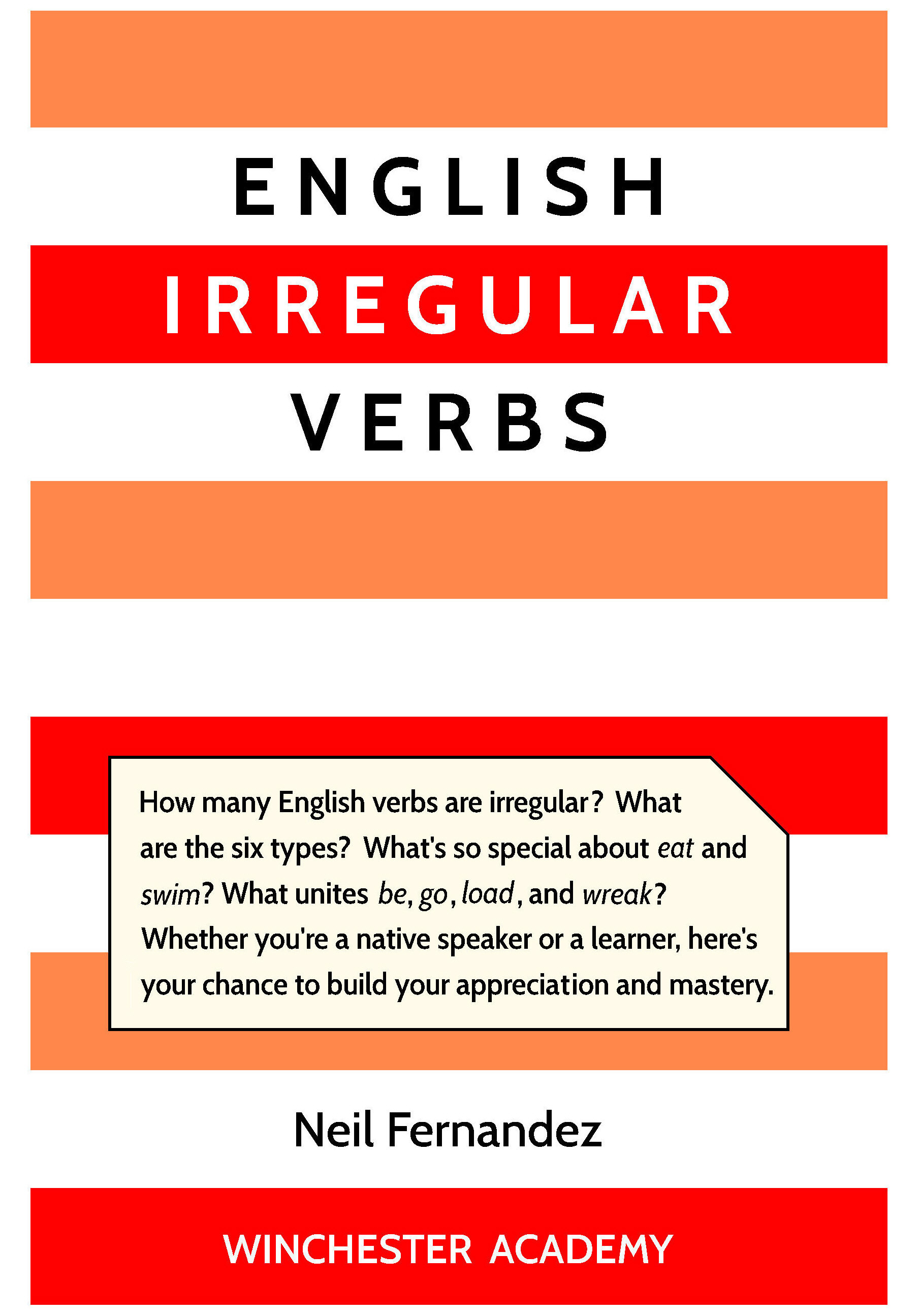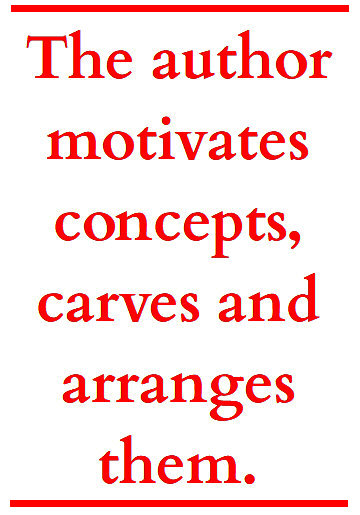
BEST IN FIELD
English Irregular Verbs
Published by Winchester Academy
ONE AND A HALF BILLION people – almost a fifth of the world – are learning English as a non‑native language. Over a billion others already speak English fluently, whether they acquired it natively or otherwise.
If you’re reading this sentence, you won’t say I gived, you finded, or she has taked. You’ll say I gave, you found, and she has taken. You’ll know about English irregular verbs.
But what actually is an irregular verb?
That’s the question with which Neil Fernandez, the radical educationalist, opens this remarkable book.
You may think you can answer it perfectly, but can you?

An irregular verb is one that isn’t regular. It breaks the rules. Yes indeed. But what are the rules? Is offer regular? Is prefer? How about exit and format?
The author sets out the rules with a crystal clarity you won’t find in any other book. Into the bargain, you’ll almost certainly learn something new about levels of vocal stress.
Next question: how many irregular verbs are there in current usage?
Before he tells you a number, the author talks you through some preparation.
Some irregular verbs are compound. Become and understand, for example, are based on come and stand. Others are simple: come, stand, go, read, write, and so on.
Then there’s current usage. What does it mean? Neil introduces us to some of the verbs that live in the boundary zone, telling us why he counts some of them in and others out. See pages 79‑83.
All told, he finds 191 simple irregular verbs in the contemporary English language. Each one gets its own entry and three example sentences to illustrate how it’s used.
Most of the 191 are irregular all the time, such as do, leave, and make. But quite a few are only irregular some of the time, such as hang, prove, and work. These particular three, for example, are irregular commonly, sometimes, and rarely. Notes to their entries explain further. For a taster, see pages 89, 98, 179, and 201.
Neil also considers 171 compound irregular verbs. These include all the ones that are among the 100,000 most commonly used words in the language.
Once you’ve read English Irregular Verbs, you’ll keep referring to for decades.
RESPECT FOR THE READER shines through on every page. The author doesn’t introduce concepts and then try to pour them in your head. He motivates them. Then he carves and arranges them.
He talks about what he’s doing. He gives you background. He offers stimulating, memorable connections. Don’t be surprised that his son, Arran Fernandez, whom he home‑educated, has several times made world headlines for his academic achievements.
The author wants you to ask intelligent questions. He continually spurs your curiosity. You’ll feel as if you’re his only student.
Like all the best teachers he relishes a good digression, and we especially admire his prowess with footnotes.
Have you met tittles? What about infixes and pilcrows?
And the verb go – peculiar, isn’t it? Why is its past tense went? Go and went don’t look anything like each other.
That’s because they derive from two entirely different verbs. Went tracks back to the verb wend. Read page 77 and you’ll be unlikely to forget the meaning of suppletion.
As for be, it’s the weirdest verb of all. You’ll soon start to see be differently too.
BUT THE AUTHOR doesn’t just serve you with interesting facts. We love his concern for structure. He’s a master at chunking his material.
He communicates what depends on what, what types of a thing exist, and what kinds of thing various other things are.
If you’ve never realised how invigorating it is to be taught like this, you’re about to find out.
Necessarily, one of the big questions the author addresses is this: what types of irregular verbs are there?
He presents six types in all, defining each one with great clarity. Then he breaks them up into 14 smaller groups. Both the definitions and the summaries are memorable and powerful.
We doubt there will be many students, teachers, or lecturers – whether or not they’re taking or giving a language course – who will read this book and not learn something new about English.
We are absolutely confident when we say this is the world’s best book on English irregular verbs.
ONE OF THE AIMS of the book is to inspire active investigatory thought.
Are you experienced at using the notion of contrapositive in your logical thinking? Do you know the difference between a contrapositive and a converse? See page 6. This isn’t about learning the meaning of words. It’s about how to think.
What about changing perspective? When you’re investigating something, do you apply techniques – specific ones that you can describe? See note 8.2 on page 10.
You’ll see what we mean when we say this book empowers its readers.
LET’S NOW CHANGE our own perspective. Why do we say things like know / knew / known, sit / sat / sat, and think / thought / thought? What on earth is that three‑part item with the two slashes?
You’ll soon understand what it is much better than you did before.
To grasp what’s happening, you need concepts of form and function. You’ll get them. They’ll be clear. They’ll be so clear that you’ll want to play with them, build on them, apply them.
That’s the philosophy behind this book.
Other concepts introduced with a similar aim in mind include aspect, phoneme, and voice. See the long list on pages 257‑258.
PERHAPS YOU’RE studying English. Perhaps you’re not studying English, but you enjoy being encouraged to think about a topic by an author who knows how to enliven it.
Perhaps you’re a teacher. If so, you’re probably keenly aware that very few books exist that truly help students expand their intellects. Well your students will adore this book, and so will you.
Have a look at the sample pages. This book breaks the mould. Buy it. ■︎
